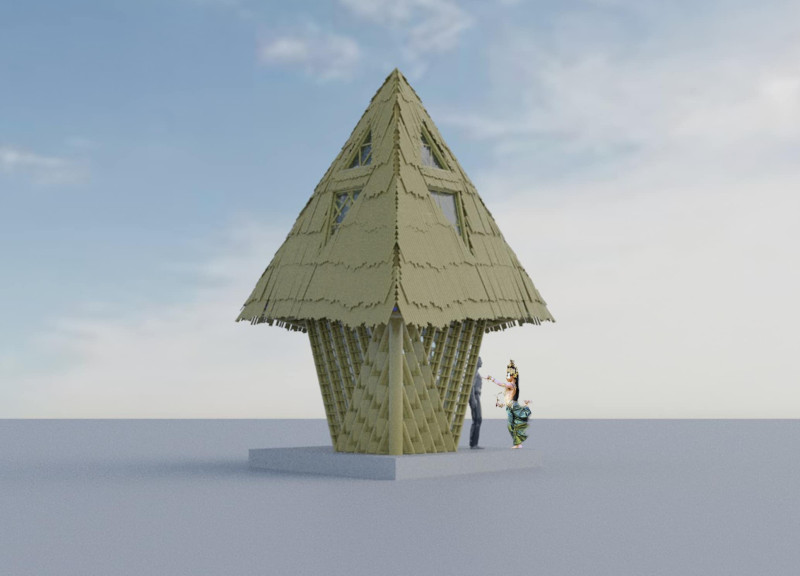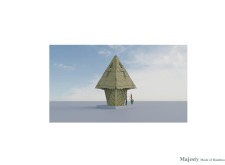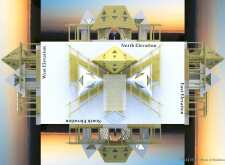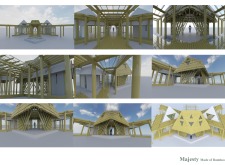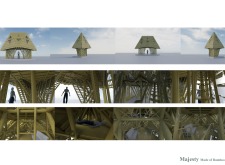5 key facts about this project
The project's layout consists of various interconnected spaces that facilitate different activities. The open plan encourages social interactions, while dedicated areas for classes or workshops highlight its multifunctional purpose. The design optimizes natural light and ventilation through strategically placed triangular windows, enhancing occupant comfort and reducing reliance on artificial lighting. The overall structure features a steeply pitched roof that not only aids in rainwater management but also enhances airflow, contributing to thermal comfort.
Unique Design Approaches and Materiality
The choice of bamboo as the main material distinguishes this project from conventional architectural practices. Recognized for its strength and sustainability, bamboo is utilized extensively throughout the structure, from flooring to structural supports. This material choice reduces the overall carbon footprint of the building, aligning with contemporary environmental goals. The architecture demonstrates a blend of traditional and modern techniques, resulting in a visually cohesive and contextually responsive design.
Incorporation of natural fiber materials and concrete for the foundation further emphasizes reliability while allowing for the use of local resources. The vertical elements of bamboo add a rhythmic quality to the design, creating a visual connection to the surrounding landscape. The project also embraces a modular approach, allowing for potential expansion and adaptability to future community needs. These distinct attributes contribute to an architectural identity that respects both heritage and modern requirements.
Innovation in Functionality and Aesthetic Integration
The "Majesty Made of Bamboo" project illustrates a strong commitment to functionality without compromising aesthetic values. Open spaces are designed to accommodate community events, workshops, and educational programs. The integration of natural landscaping elements serves to enhance the architectural setting, promoting biodiversity and environmental awareness.
Architectural sections reveal the careful consideration of climatic conditions, demonstrating how the design encourages passive solar heating and natural cooling. The emphasis on reducing energy consumption aligns with sustainable design practices prevalent in modern architecture. This forward-thinking approach showcases how traditional materials can be effectively utilized within the context of contemporary architectural solutions.
For further insights into the project, including architectural plans and sections, readers are encouraged to explore the project presentation in greater detail. Engaging with these elements will provide a more comprehensive understanding of the innovative architectural designs and ideas that define "Majesty Made of Bamboo."


